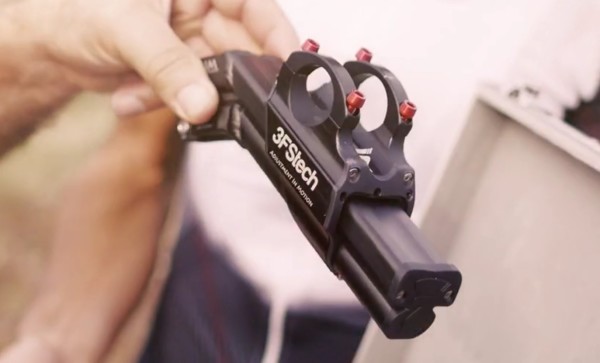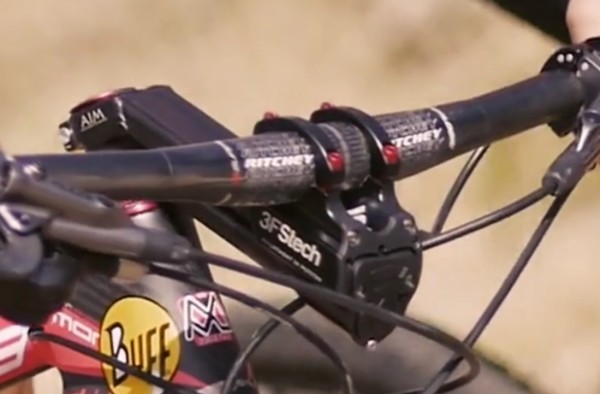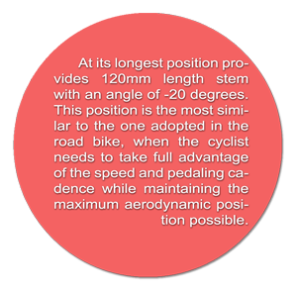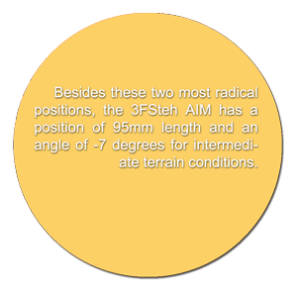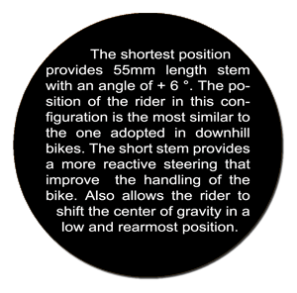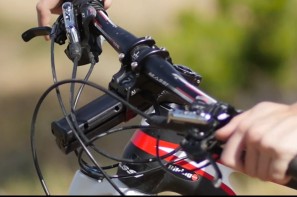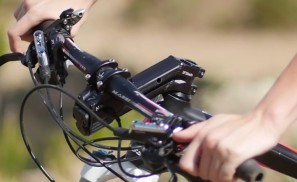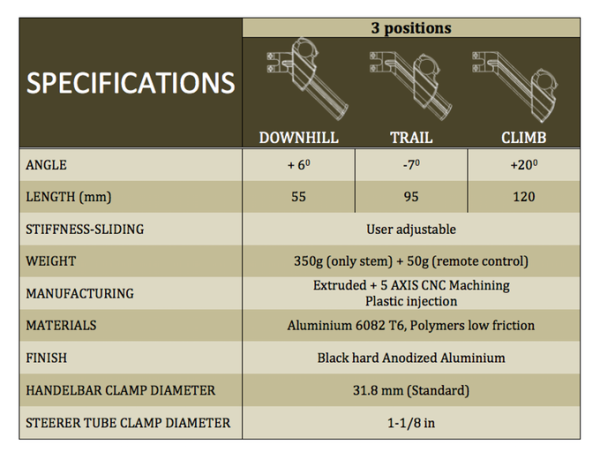Meet 3FStech’s AIM Dropper Stem….. well, it was bound to happen eventually. From oval chainrings and dropper posts, to things like elastomer suspension and Softride’s Beam, there has been a continuous flow of curiously innovative ideas in our industry. So where does the AIM (Adjustment In Motion), stem fit in?
Drop past the break to see what 3FStech have created that warranted a rap video of sorts….
As mountain bikers, we have widely accepted some hard to swallow tech that we at one time swore would never make it into mainstream. A full suspension bike used for cross country was unimaginable at one time. Wide bars?…. Pah-leez! So how about a dropper stem? A lot of companies have gone to a lot of trouble to design bikes and accessories for us that are decent climbers and even better descenders. To help, we have things we can adjust on the fly: Dropper posts, front & rear suspension damping and travel, and even the occasional helmet and shoe adjustment to make sure things are primed and ready for action. The folks at 3FStech have put together quite a bit of marketing material and Retool fitting videos to kick off the AIM stem and started a Kickstarter page to raise funds to put this concept into production.
From the looks of it, the AIM stem uses a pin system similar to that of the old and reliable Gravity Dropper seatposts that is controlled by a thumb lever. To change your position, you simply press the button and push or pull the stem into position.
The AIM stem has 3 positions: “downhill”, “trail” and “climb.” In theory there might be something to it, with a (see below).
- “Climb” *in pink is in the 120mm/-20° position said to make the rider more aero-dynamic, and lowers the front end for easier climbing.
- “Trail” *in yellow is the 95mm/-7° position for intermediate trail conditions.
- “Downhill” *in black is the 55mm/+6° position is for descending.
If there ever was a best of both worlds scenario for stem length, this could be it. You can run the super XC 120mm drop stem only when you’re climbing to keep the front end planted and shift your weight forward. But at the same time you can pull yourself up and back for the descents with a 6 degree rise and stubby 55mm enduro stem. Calling a 95mm stem a trail stem might be a bit of a stretch these days, but as a medium setting it might not be that bad.
In the end, does the benefit of having different stem lengths outweigh the added weight and complexity of the stem? Is dropping your stem and seat post at the same time feasible on the trail? Without riding it who knows, but watch the video to decide for yourself.
